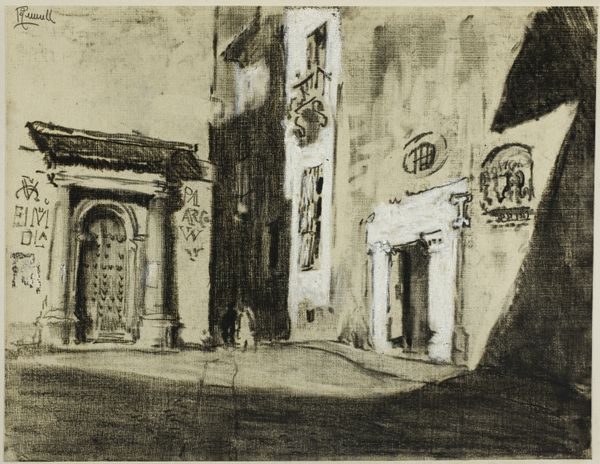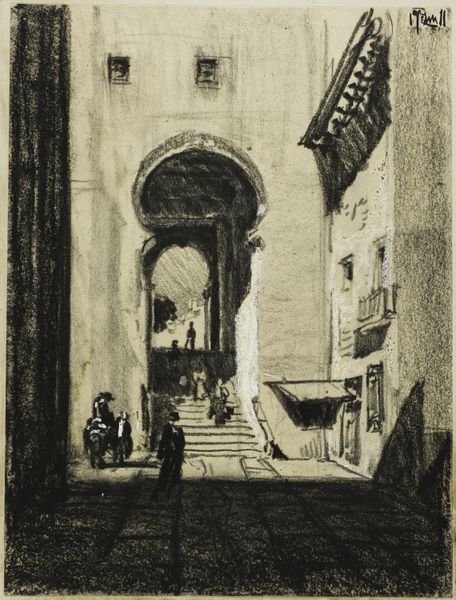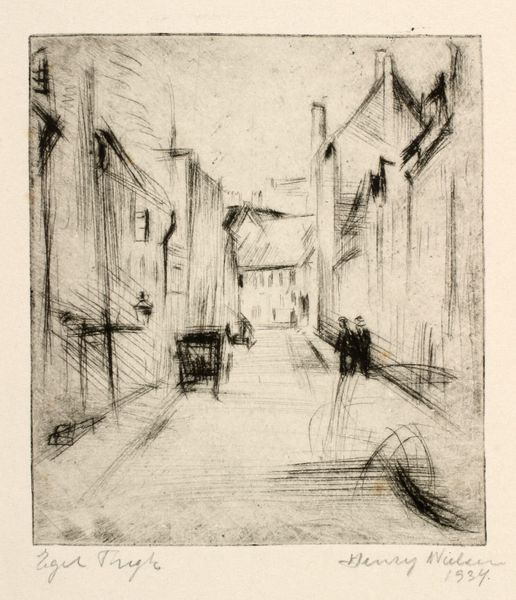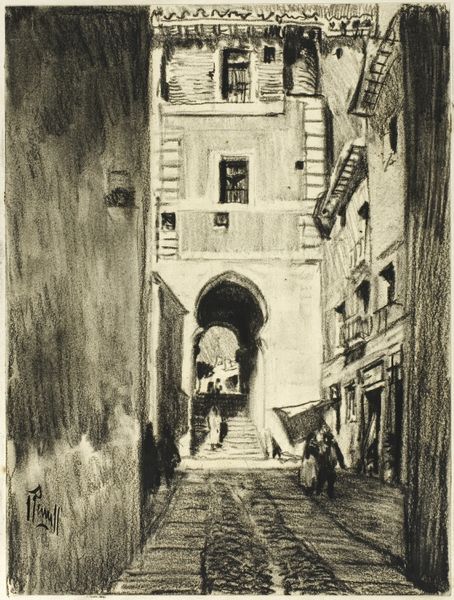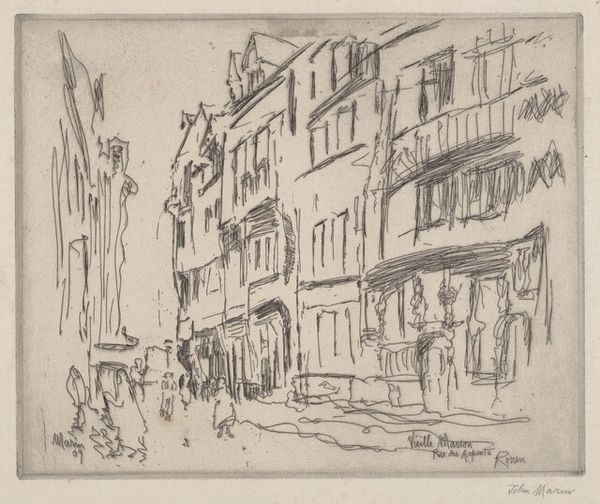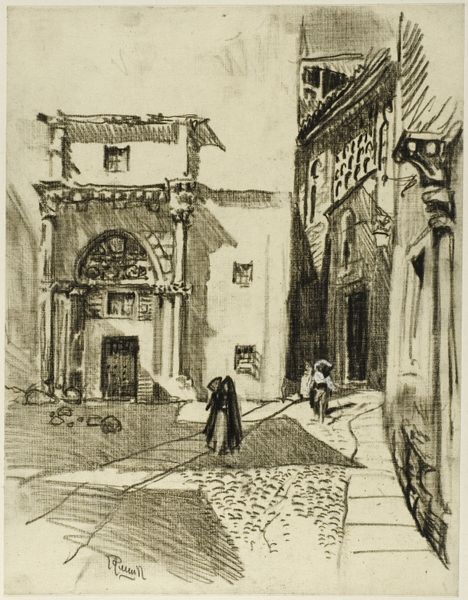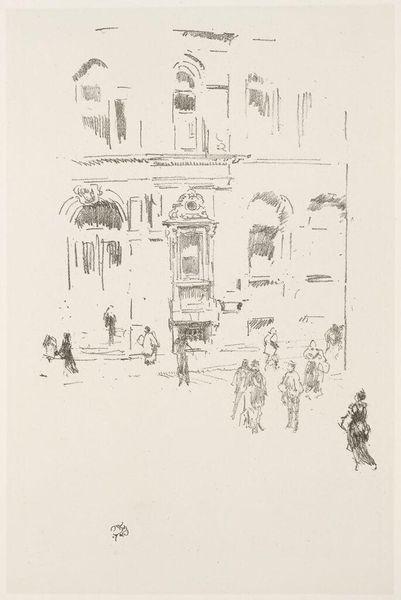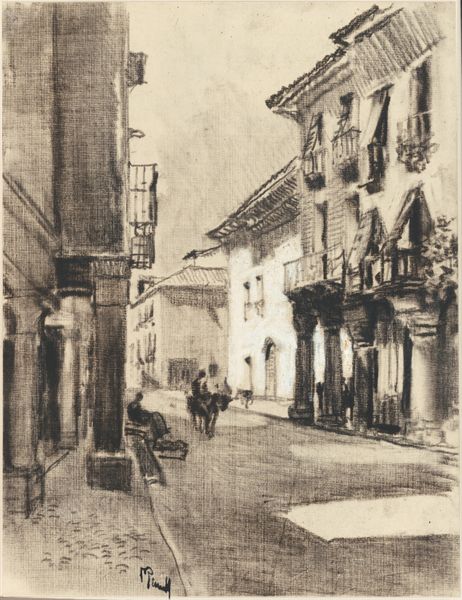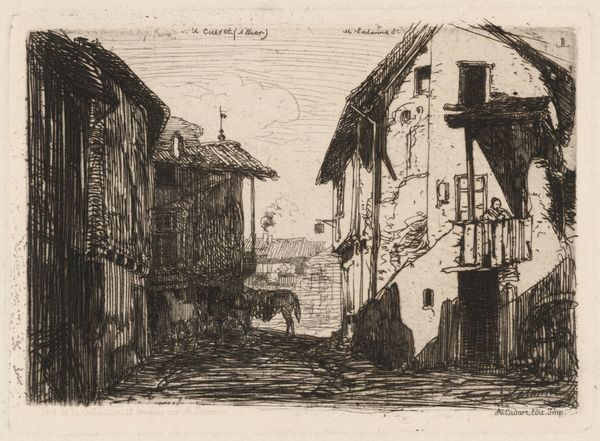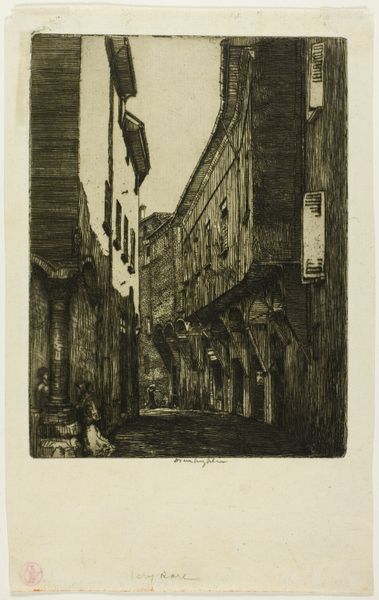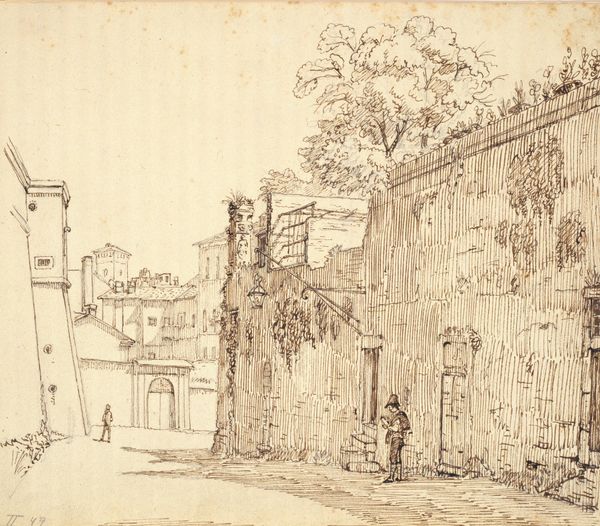
drawing, print, etching, paper, pencil, chalk, graphite, charcoal
#
drawing
# print
#
etching
#
pencil sketch
#
landscape
#
paper
#
pencil
#
chalk
#
graphite
#
cityscape
#
charcoal
#
realism
Dimensions: 217 × 282 mm
Copyright: Public Domain
Editor: So, this is Joseph Pennell's "The Monasteries of Alcalá," dating back to around 1903. It's an etching, so it's a print on paper, made using graphite, chalk and charcoal. I’m struck by its casual, almost documentary feel; it captures a slice of everyday life. How do you interpret its historical significance? Curator: It’s interesting you say 'documentary'. While seemingly casual, consider Pennell's background. He wasn't just recording life; he was deeply invested in how buildings reflect societal values. The monasteries, symbols of power and faith, are shown amid the everyday – what does that juxtaposition tell us about the changing role of the church at the turn of the century? Editor: That's a great point. It does seem to soften the institutional power by setting it in an everyday scene. Were there other artists who were making similar observations? Curator: Absolutely. Think of the Realist movement in painting, how they aimed to depict unvarnished truth. Pennell, while not a painter here, shares that sensibility. Also, remember the Arts and Crafts movement, its critique of industrialisation. By depicting traditional architecture, is Pennell subtly commenting on modernization? Editor: That's really insightful. The choice of the monastery gains new meaning now. I hadn't thought of the shadow of industrialisation. Curator: Exactly! Consider how these monasteries would have functioned in the social fabric, what role they had within the lives of people shown in this scene. Perhaps he captured a bygone era. Editor: I see it now. It's more than just a snapshot; it is really Pennell showing a shift in societal structure. Curator: Precisely! By looking at how society is displayed, it opens doors for thinking of broader shifts in values during this timeframe. Editor: I never would have picked up on the changing cultural role, it enriches the work greatly, thank you.
Comments
No comments
Be the first to comment and join the conversation on the ultimate creative platform.
